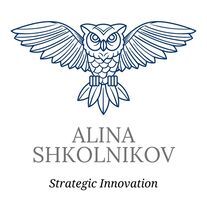|
About a year ago we launched “Double Impact” a podcast where I interview professionals, investors, and entrepreneurs in the field of impact, and together, we take a deep dive into the worlds of impact entrepreneurship.
In our first episode, before all the interview we wanted to get our listeners on on the same page about the complex question – what is impact actually?! The word “impact” did not originate as an economic-financial concept. Each thing and every person in the world has impact; both you and I have some kind of influence, positive or negative, on others and on the environment. The economic trend that has developed over the past decade under this concept of “impact” refers specifically to financial investments that have a clear and stated intention to produce economic value (ROI)– money – alongside social or environmental value (ROI). We all know that economic value needs to be measured, and in impact investments, social and environmental value are also measured. Not just saying “I am doing beneficial work,” but also measuring – how much new benefit am I creating? How? Why? And for whom? Not just saying that I have a profitable economic model, but also being able to present it to investors and convince them that they will get their money back, with added interest. This concept serves as a conceptual basis for the impact and development revolution of Capitalism 2.0, the next generation of capitalism. It is a new economic system designed to produce not only an economic value for money, but also a measurable and directed value, or impact – social and/or environmental. We will return to measurable and directed later. Impact initiatives dominate a variety of fields and include different economic models. Some are startups that work to solve specific social challenges, such as access to water and soap for hand washing in southern India’s rural areas, or changing perceptions in real estate construction through new housing models, including changing controlled rentals for the benefit of the neighborhood’s original residents. There are even social bonds; for example, bonds aimed at reducing dropout rates from higher education institutions in Israel. The revolution aspires to correct what people in the impact industry, including myself, see as an historical injustice. The absurd situation we see in today’s markets cannot go on - businesses often causing damage to the environmental and the social fabric in which they operate in order to benefit only their shareholders, while governments and philanthropic foundations are supposed to come and clean up after them. Think for a moment about companies getting rich at the expense of our shared goods. Businesses that profit by exploiting perishable natural resources at the expense of the environment and nature, push environmental organizations to deal with all the problems which they have created. The easiest way to understand this concept is to think of a spectrum, running from capital intended to generate more net income to classical philanthropy. On one end, the businesses and investors whose sole decision-making consideration is financial – at times, as mentioned, at the expense of ethical considerations. On the other end, the organizations that consider only social and environmental opportunities and are supported by money that would never be returned, or donations. The world of impact resides between these poles and has an ABC, three levels that span a spectrum of decision-making between the two poles. A is the most basic – actively avoiding doing any evil. Act to avoid harm. What is meant by harm? The classic definition is to avoid investing in products that are known to be unequivocally harmful to humans or the environment. Leading them are the tobacco, weapons, and fuel industries, as well as pornography and gambling. The B takes us up another level on the spectrum, to considerations that take into account all stakeholders, not just the company's shareholders. Benefiting all stakeholders. But who are the stakeholders we aim to benefit? Here we can identify corporate responsibility on the one hand, when businesses donate money and employee time for the benefit of society and ESG, investing, which, alongside financial returns, on the other. What is ESG – Social, Environmental and Governance. It is important to note that in the impact field, we always talk about things that are beyond the requirements of the law. What does this actually mean? Good corporate governance will include a diversity of people in key positions: Minorities and women, transparency in decision-making, drafting an ethical code and publishing it, internal audit mechanisms, and more. In the social index, we will usually refer to corporate responsibility alongside employment conditions, and in countries without social security systems, we also consider payment of employee pensions, maternity leaves, and other basic social conditions that are not covered in the local law. The environmental category typically corresponds to the industrial field in which the company operates. In most industries, procurement policy is addressed, and there is specific reference to the use of plastics. Examination of energy efficiency and water consumption efficiency policies, as well as non-polluting transport channels and the like. Let’s look at a local example: Maala is the non-profit CSR standards-setting organization in Israel, which ranks Israeli businesses according to their reporting in the three core areas: Corporate governance, social impact, and environmental impact – ESG, according to several sub-categories that break down these headlines. An interesting fact is that the Maala Index also exists as a stock exchange index. In the last five years, the index has shown significantly higher returns than the leading indices in the market, with 65% return against the 25% of the TA 125 index and the TA 35 index. That’s right, higher returns. An excellent proof that – contrary to the popular, yet completely incorrect perception, that doing good always comes at the expense of making money – one can both do good and earn well from doing it. Doing well by doing good. Finally, the highest level, marked by the letter C, connects us to the worlds of impact per se: Active contribution to solutions. Solutions to what? for the UN’s Development Goals. In 2015, the United Nations General Assembly declared a commitment to 17 sustainable development goals, including the eradication of poverty and hunger in the world, promoting global economic growth, combat climate change and more. In July 2019, Israel took its first step and reported to the UN for the first time on its desire to meet the development goals. These immense goals cannot be realized by governments and philanthropists alone. This is precisely why impact investments are needed, investments that deliberately seek to solve the world’s most challenging problems, hopefully in the coming decades, with the help of new capital streamlined from the private sector. This marks a perceptual change. Instead of talking about venture capital as a tool of creating solely more capital, we need to change the paradigm and aim for a model of venture capital and impact. The ambition is not to increase the risk or expect a lower return on the capital, but to begin to integrate the impact that companies have into the core of the venture and to measure it. How can we measure? There are several methods of measuring social and environmental impact; the method that has received the most comprehensive support to date is IMP, by the Impact Management Project. This framework helps entrepreneurs and investors gain a profound understanding of their impact over time vis-à-vis their theory of change, through a series of guiding questions. Worldwide, the impact revolution is estimated at $715 billion! That is about five times the State of Israel’s budget (pre COVID)! This is money earmarked for impact investments; money intended to produce a measurable and directed social and environmental impact alongside return on investment, plus a financial return. Israel, known as “the startup nation” with more than 6,500 startups, 639 registered investors, 389 hubs, 380 multinational technology companies, and a total of $10.5 billion in investments in 2020, is also a part, albeit small for the time being, of the impact revolution. Some 10 impact venture capital funds operate in Israel, as well as over 23 incubators, accelerators and hubs, all designated for impact. There is also an academic center, the ACTO Center at the College of Management Academic Studies in Rishon Lezion. Moreover, the the GSG, a leading global player in the fiekd, is represented in Israel by the Israeli Forum for Impact Economy and includes most of the major stakeholders in the field in Israel. The cumulative managed investments in the field of impact in Israel are constantly increasing, currently estimated at over $622 million. The total managed investments in the field in the Middle East and North Africa constitute only 5% of the total impact investment assets in the world. Alongside investors, there are, of course, also a number of impact initiatives. Why do we not know how many impact initiatives there are and exactly how much money is invested in them? Our best estimate is that three are 467 startups tagged as SDG, by the Startup Nation Finder. Note that the Israeli definition of impact is very broad and rather vague. Various players in the field flatly refuse to accept each other’s definition. The term may refer to the target market of the venture, to the product itself, or to the founders’ identity. At Double Impact we try to always use the same definition, but it is worth noting the differences between the field’s various stakeholders. It is important to note that different sectors have specific roles in creating this industry. For example, philanthropy should promote ecosystem-focused models and practices, both as a philanthropic strategy and as impact investors. The Edmond de Rothschild Foundation takes this dual role very seriously. We have therefore built an impact entrepreneurship arm in 2018, which works to build and strengthen the impact ecosystem in Israel. We are also committed to designating 3-5% of the Foundation’s non-donation investments to the field of impact. Our first investment made it possible to create Israel’s first social bond, designed to reduce higher education students’ dropout rate in the field of computer science in Israel. Our strategy is aimed at a broad development and we adopt a holistic approach, viewing the potential of impact to turn into a business sector, from supply to demand through mediation. You are invited to listen to all Double Impact episodes on the Edmond de Rothschild Foundation website or any of the podcast apps. The website also includes additional interesting materials and relevant links, and your are invited to send us requests and comments through it. The full first season of double impact is available now, created in collaboration between the Edmond de Rothschild Foundation and Impact Nation. Photo by Charlie Firth on Unsplash
0 Comments
Leave a Reply. |
AuthorMe :) Archives
August 2021
Categories |


 RSS Feed
RSS Feed
